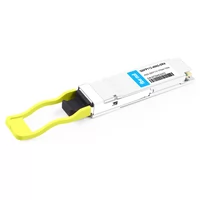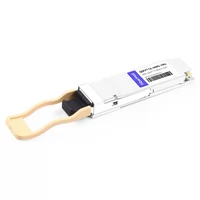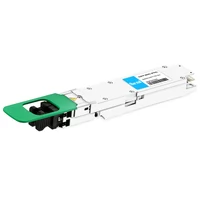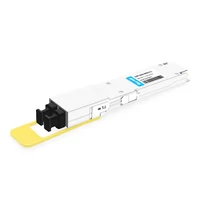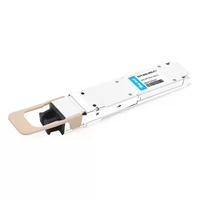Optical modules are essential for high-speed connectivity and efficient data transmission in the fast-moving world of data centers and network infrastructures. This article examines NVIDIA transceivers, including the types of optical modules available, their compatibility with various systems, and the importance of choosing the right components for optimal performance. Suppose you’re an IT professional looking to upgrade your infrastructure or a tech enthusiast wanting to learn more about optical networking. In that case, this all-inclusive guide will provide you with everything you need to know about navigating the complicated realm of modern networks that use Nvidia transceivers.
Table of Contents
ToggleWhat is an NVIDIA Transceiver?
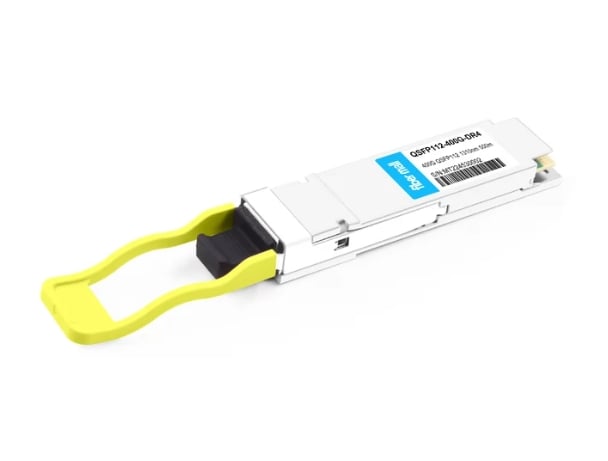
Overview of Transceiver Technology
The technology of transceivers combines both the transmitter and receiver functions in one device, thus allowing for two-way data communication. In optical networks, transceivers change electrical signals into light signals and back again to send information through fiber optic cables. These devices are crucial for sending vast amounts of data quickly over long distances, making them essential parts of telecommunications infrastructure and data centers. Currently used by modern transceivers are different types of physical standards or technical standards, such as SFP and QSFP, among many others, to make sure they work well with various networking environments. It is necessary to understand these things to achieve optimal network performance while ensuring seamless connectivity.
Key Components of an Optical Transceiver
The optical transceiver has a few necessary components that determine its function and performance. They are:
- Laser Diode (LD): It converts electrical signals to optical signals. The type of laser used can influence the transceiver’s data transmission range and speed.
- Photodetector (PD): This is the counterpart to the laser diode, as it converts optical signals back into electrical ones. Its response time and sensitivity are essential for adequate signal detection.
- Optical Interface: This includes lenses or connectors that allow light coupling in/out of fiber optic cables. Proper quality and alignment must be maintained within this interface to minimize signal loss.
- Electronics: Components responsible for modulation/demodulation – ensuring transmitted/received data accuracy through processing management control functions.
- Housing & Cooling Systems: Physical casings protect sensitive internal parts from environmental factors. Maintaining optimal operating temperatures over time guarantees reliability through cooling mechanisms that ensure performance, mainly when such systems are used continuously without breaks.
Knowing these parts will help you choose the correct transceiver for your networking needs, improving network reliability and data transmission efficiency.
Types of Transceivers: Single-Mode vs Multi-Mode
There are two main types of optical transceivers: single-mode and multi-mode, each designed for different uses. A Single-Mode Transceiver has a tiny core (usually about 8 to 10 microns wide) that can only let through one kind of light wave at a time. Because of this, it can send data over long distances—sometimes even more than 100 kilometers—with little signal loss in between, which makes it perfect for use in places like telecommunications systems or high-bandwidth data networks.
On the other hand, Multi-Mode Transceivers have larger cores (50 to 62.5 microns across) that allow many different kinds of light waves to pass through together simultaneously. This means they can transmit much more information but only over shorter distances (typically less than 2 km) due to modal dispersion effects limiting their reach and capacity. As such, these devices tend to be used within local area networks where cost needs to be balanced against performance requirements.
When deciding whether to use single-mode or multimode transceivers for networking purposes, considerations include distance, data rate, and budget, among others, specific to the environment being considered.
How to Ensure Compatibility with NVIDIA Products?
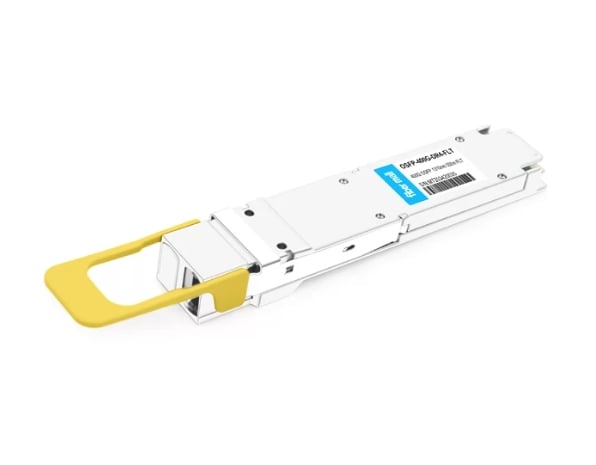
Understanding NVIDIA Product Specifications
It is vital to check the specifications of an NVIDIA product to ensure a seamless fit with different hardware and software systems. Users can view these requirements on the official website of the graphics card maker. The specs typically include things like architecture type, memory capacity, and supporting technologies such as CUDA or RTX support, among others.
Also worth checking out are technology review sites that do analysis and benchmarking tests across various models from different companies, including Nvidia. These include Tom’s Hardware, AnandTech, and TechRadar, which consistently appear high up in search results due to their detailed reporting around performance measures (FPS), cooling solutions used, etc., providing users with critical information when deciding what best suits them.
Lastly, community forums should not be overlooked since they provide real-life experiences about compatibility issues faced by users who have bought similar items before. Thus, potential buyers have more insight into whether this particular model will work well with other components already present within one’s personal computer system setup.
Standard Connectors and Cables Used with NVIDIA Transceivers
NVIDIA transceivers typically use different connectors and cables to ensure seamless connectivity and optimal performance in networking setups. The most common connectors are SFP (Small Form-factor Pluggable), SFP+ for 10 Gigabit connectivity, and QSFP (Quad Small Form-factor Pluggable) for higher bandwidth applications like 40 Gigabit Ethernet configurations or 100 Gigabit Ethernet configurations.
Usually, standard cabling solutions related to these connectors include fiber optic cables such as single-mode optical fibers, multi-mode optical fibers, and copper cables, including Direct Attach Copper (DAC) cables, which allow efficient data transmission over short distances, and OM3/OM4 multi-mode fibers, which have better throughput capabilities over longer distances. Single mode is used when the distance is long.
Maximizing efficiency requires correctly incorporating cable(s)/connector(s). This ensures reliability within an NVIDIA-supported network while making it compatible with various types of data center architecture. Users should thoroughly read NVidia’s official specifications documents and recent reputable tech articles about such matters for a deeper understanding.
Tips for Selecting Compatible Transceivers
Here are the essential things to keep in mind when choosing compatible transceivers for NVIDIA products:
- Equipment Compatibility: You must ensure that your transceiver is explicitly mentioned as compatible with your NVIDIA hardware. Take a close look at the specifications from the manufacturer and supported models so you do not have any issues connecting.
- Connector Type: The network setup dictates which connectors should be used on a transceiver. Make sure it uses SFP, SFP+, QSFP, or some other type of connector, as this will ensure a secure connection between devices.
- Data Rate Requirements: Determine what data transfer speeds applications running over the network require. This way, one can select an appropriate standard 1G, 10G, or even up to 100G Ethernet type of transceiver that ensures optimal performance under its intended load by a given network.
- Distance Specifications: Consider how far apart two points may be where information needs to travel through them. Single-mode fibers would work better for long distances, while shorter connections would require multi-mode fibers; also consider copper alternatives if a concise range is involved.
- Quality and Certification: It’s best practice to use only well-known brands offering certified industry-compliant optical modules because they tend to last longer and improve interoperability across different types of networks.
So, when buying these elements, you must guide your choice if you want efficient performance combined with cost savings for users who integrate them into NVIDIA-supported networks.
What Are the Benefits of Using NVIDIA Optical Transceivers?
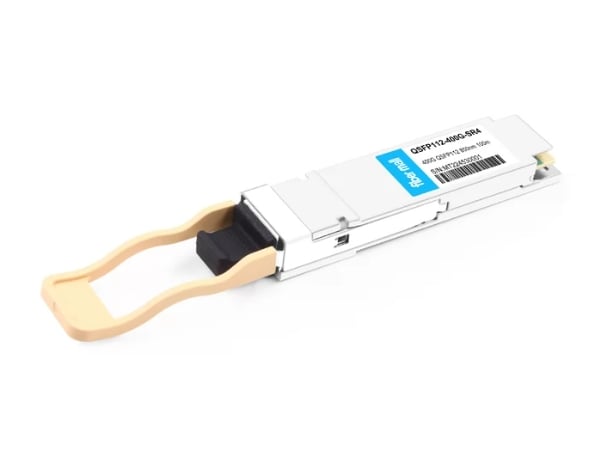
Enhanced Performance and Reliability
Using cutting-edge technology in NVIDIA optical transceivers results in superior performance and reliability. According to industry leaders, these devices are said to minimize latency by using optical signal transmission, which is a crucial element for fast communication between devices. Furthermore, they can function across different ranges effectively and even in complicated networking environments without losing their ability to perform consistently. In addition, high-quality certified components are used to make the transceivers, thus lowering the chances of signal degradation, which ultimately leads to a more reliable network infrastructure that is also stronger. This quality of dependable performance is critical for applications such as data centers and high-performance computing systems where constant connectivity is needed. Hence, it can be concluded that introducing NVIDIA optics transceivers will significantly improve your network efficiency, thereby giving you an edge over competitors in terms of speed and trustworthiness.
Advanced Digital Diagnostic Monitoring
NVIDIA optical transceivers rely on Advanced Digital Diagnostic Monitoring (DDM) to improve network management and reliability. DDM continuously monitors critical parameters in real time, including temperature, voltage, and optical power levels. These metrics can be tracked over time so that network administrators can identify potential problems before they become serious issues requiring significant intervention, which would lead to increased downtime or maintenance costs. In addition, this feature allows users to ensure all transceivers operate within safe thresholds for optimal performance of their networks, as well as aiding effective troubleshooting while meeting industry standards, thus providing a more resilient infrastructure overall. Including advanced DDM into Nvidia’s transceivers allows businesses to make informed decisions, resulting in increased operational efficiency and better network reliability.
Cost-Effective Buying Options from NVIDIA
If you are looking for affordable options for buying NVIDIA optical transceivers, there are a few ways. First, it is worth checking out NVIDIA’s website, as they often have deals and discounts that allow customers to buy the hardware directly at lower prices than usual. Moreover, authorized resellers and technology partners usually provide bundled solutions that can lead to huge savings, especially when buying in bulk. This type of partnership comes with warranties and support services, thus increasing the value of money spent on it even more. Finally, refurbished or certified pre-owned equipment from trusted suppliers should be considered because it delivers high-quality products at reduced costs, enabling organizations to upgrade their network infrastructure without exceeding budget limits. These strategies will help businesses get maximum return on investment when dealing with NVIDIA optical transceivers.
What is the Role of Transceiver Modules in Networking?
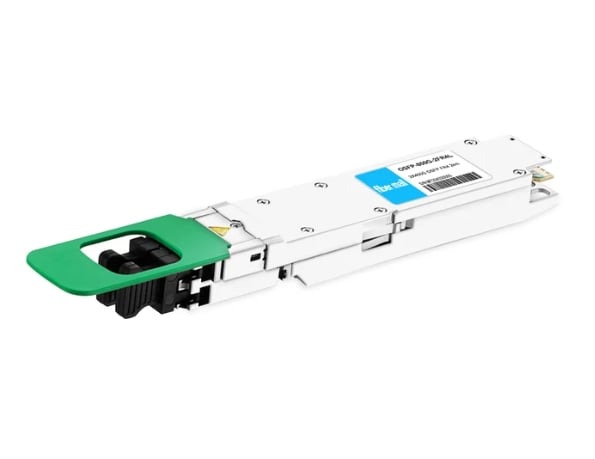
The Functionality of 10GBASE-SR Modules
The 10GBASE-SR module is designed for short-range data communication over multimode optical fiber at a rate of up to 10 Gbps and maximum distances of 400 m, depending on the type of fiber used. Their working wavelength is 850 nm, and they comply with IEEE standard 802.3ae for ten gigabit Ethernet. These modules are critical in data centers and high-performance computing environments where quick transmission speeds and low latency are required. It uses vertical-cavity surface-emitting laser (VCSEL) technology to improve efficiency by providing better power consumption and integrated signal integrity benefits within itself. In interconnecting devices, this module facilitates fast data transfer, increasing overall efficiency and capacity within networking infrastructures.
The Importance of LC-LC Connections
LC-LC connections are crucial in optical networking because they are small and can connect many fibers in a limited space. This is important for data centers and telecommunications installations where maximizing the efficiency of available space is essential. The LC connector has a smaller form factor than other connectors like SC connectors, making it possible to fit more connections into tight areas. This type of connection is known for its stability and reliability for high-speed applications, both of which are critical in ensuring signal integrity. Besides that, ease of use was considered when designing an LC connector since it has a latching mechanism that prevents accidental disconnections. Also, duplex lc-lc cables allow bidirectional transmission, thus improving network performance further. To sum up, modernized networking environments should adopt these innovations to meet the increasing demand for bandwidth while at the same time managing spaces efficiently within their infrastructure systems.
Durability and Temperature Tolerances
To ensure the performance of optical networking components like LC-LC connections and cables, it is vital that they are durable and can withstand different temperatures. These parts are built to resist several environmental conditions so they work optimally in various places. Most LC connectors consist of high-temperature thermoplastic materials that maintain their structure over a wide range of temperatures, usually between -40⁰C and +85⁰C. The optical fibers used in these links undergo rigorous testing for tensile strength, among other things, including environmental resilience where moisture, dust, chemical exposure, etc., are concerned. Therefore, quality selection with vital durability attributes should be made when choosing components for data centers or telecom installations. This will help keep network performance at its best over time, even under demanding conditions like those in data centers or telecommunications installations. Organizations can reduce failure rates and ensure continuous operation by ensuring components can withstand extreme conditions.
Where Can You Buy NVIDIA Transceivers?
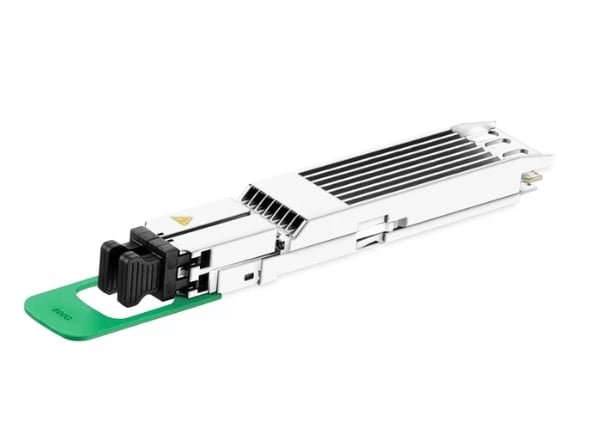
NVIDIA Networking Store Overview
The NVIDIA Networking Store is a website that sells networking hardware such as transceivers. It has a range of NVIDIA-branded networking products to ensure compatibility and performance within the ecosystem. Among its key features are:
- Product Range: The store offers an extensive selection of transceivers for different applications, including data centers and high-performance computing (HPC). This includes various optics designed for specific distances and data rates to meet diverse network needs.
- Compatibility Information: Detailed compatibility information is usually included on each product page to help customers choose the type of transceiver for their networking equipment.
- Support and Resources: This store provides technical support, installation guides, product documentation, and other resources that help customers make informed decisions when buying these items or integrating them into existing networks.
If you want to buy NVIDIA transceivers, then visit the NVIDIA Networking Store because it guarantees quality assurance and compatibility with all other NVIDIA hardware solutions.
Exploring Buying Options
When buying NVIDIA transceivers, it’s worth looking at different online marketplaces to get more options and better deals. Here are the current top three websites for NVIDIA networking products:
- Amazon: Amazon offers a wide range of NVIDIA transceivers at competitive prices. For a hassle-free shopping experience, users can take advantage of prime shipping options and read reviews from previous customers before purchasing. The marketplace usually has new and refurbished items that cater to different budget levels.
- Newegg: Newegg specializes in tech so that you can find all sorts of components related to NVIDIA networking, including transceivers. Their detailed specifications help buyers better understand product performance and compatibility, while customer ratings give insight into what others think about them. Plus, they run regular sales on their electronics, which is always nice!
- CDW: IT solutions are CDW’s specialty, but they also stock enterprise-grade goodies like nVidia TXs, among other things! If you’re a business looking for tailored advice, this site could be perfect—their expert team will guide you through every step, ensuring your network works flawlessly using only the best gear.
These sites offer great choices when it comes time to buy quality nVidia transceivers with added benefits such as support service or pricing options depending on what suits your needs best!
Understanding Checkout Processes and Descriptions
Here are some of the essential features that improve customer experience when going through checkout processes on the top three NVIDIA transceiver buying sites:
- Amazon: Amazon makes checkout easy and quick. Customers can securely go from their cart to using default or new payment methods. Several shipping options are available, including same-day delivery for Prime members. It is easy to track orders, and returns are simple with clear policies, which gives customers confidence in what they buy.
- Newegg: Newegg’s checkout process also focuses on convenience by guiding users through every purchase step. A summary of the order can be reviewed, along with coupon codes that apply and different shipping methods available. In addition, an account can be created so billing information and addresses are stored for faster checkout next time.
- CDW: The CDW checkout is more customized for business customers but still allows individual users flexibility during the process, such as bulk ordering options and custom quoting for large purchases after selecting items where detailed descriptions and specifications may be reviewed before finalizing an order, which helps make sure everything has been included correctly before submission; linking procurement systems into purchasing adds efficiency too!
Secure transactions aren’t all these platforms offer – they also provide a better shopping experience overall by having friendly interfaces, comprehensive order summaries, plus sufficient customer service support throughout each site’s entire transaction period!
Reference Sources
Frequently Asked Questions (FAQs)
Q: What are the uses of NVIDIA optical transceiver?
A: The NVIDIA optical transceiver is meant for high-performance Ethernet and optical networking. It allows for high-speed data transfer through multi-mode and single-mode optical fibers.
Q: What kind of optical interfaces does NVIDIA have?
A: NVIDIA provides various optical interfaces for its transceivers, including 850nm for MMF and 1310nm for SMF. This allows them to meet various application requirements in different environments.
Q: Can you explain what QSFP56 MPO SR4 from NVIDIA Networking is?
A: QSFP56 MPO SR4 by NVIDIA Networking is an optic module that facilitates high-speed data rates in 40/100/200 GbE Ethernet applications. It connects to MMF using an MPO optical connector.
Q: How do I know if my transceiver is MSA compliant?
A: When your transceiver meets the standards set out by the Multi-Source Agreement (MSA), it’s said to be MSA compliant. Such devices will work with others that meet these specifications, thus making integration into diverse networks easier.
Q: What happens at the receiver’s Optical Interface?
A: The Optical interfaces within a transceiver consist of transmitters and receivers, which convert electrical input signals from host systems into light waves before reversing this process so data can effectively travel along fiber optics between them.
Q: What are the benefits of using MMF in NVIDIA transceivers?
A: Multi-mode optical fiber (MMF) offers lower costs and easier installation in NVIDIA transceivers. It is ideal for high-speed communication, such as data centers and enterprise networks, over short distances.
Q: Can you tell me what 850nm and 1310nm wavelengths mean?
A: The 850nm wavelength is commonly used in multimode fiber (MMF) applications for short-distance data transmission. Conversely, single-mode fiber (SMF) uses the 1310 nm wavelength, which performs better in longer ranges.
Q: What must I know when selecting an optical transceiver from NVIDIA?
A: When choosing an optical transceiver from NVIDIA, you should consider the target application, type of optical fiber (MMF or SMF), MSA standard compliance, network equipment compatibility, and required data rate, among other things.
Q: Where can I order or find buying options for NVIDIA Transceivers?
A: To buy Nvidia transceivers, visit the official Nvidia Networking store or authorized distributors. Check out the description and purchase options carefully to choose something compatible with your requirements.
Related Products:
-
 NVIDIA MMS1Z00-NS400 Compatible 400G NDR QSFP112 DR4 PAM4 1310nm 500m MPO-12 with FEC Optical Transceiver Module
$700.00
NVIDIA MMS1Z00-NS400 Compatible 400G NDR QSFP112 DR4 PAM4 1310nm 500m MPO-12 with FEC Optical Transceiver Module
$700.00
-
 NVIDIA MMS4X00-NS400 Compatible 400G OSFP DR4 Flat Top PAM4 1310nm MTP/MPO-12 500m SMF FEC Optical Transceiver Module
$700.00
NVIDIA MMS4X00-NS400 Compatible 400G OSFP DR4 Flat Top PAM4 1310nm MTP/MPO-12 500m SMF FEC Optical Transceiver Module
$700.00
-
 NVIDIA MMA1Z00-NS400 Compatible 400G QSFP112 VR4 PAM4 850nm 50m MTP/MPO-12 OM4 FEC Optical Transceiver Module
$550.00
NVIDIA MMA1Z00-NS400 Compatible 400G QSFP112 VR4 PAM4 850nm 50m MTP/MPO-12 OM4 FEC Optical Transceiver Module
$550.00
-
 NVIDIA MMA4Z00-NS400 Compatible 400G OSFP SR4 Flat Top PAM4 850nm 30m on OM3/50m on OM4 MTP/MPO-12 Multimode FEC Optical Transceiver Module
$550.00
NVIDIA MMA4Z00-NS400 Compatible 400G OSFP SR4 Flat Top PAM4 850nm 30m on OM3/50m on OM4 MTP/MPO-12 Multimode FEC Optical Transceiver Module
$550.00
-
 NVIDIA MMS4X50-NM Compatible OSFP 2x400G FR4 PAM4 1310nm 2km DOM Dual Duplex LC SMF Optical Transceiver Module
$1200.00
NVIDIA MMS4X50-NM Compatible OSFP 2x400G FR4 PAM4 1310nm 2km DOM Dual Duplex LC SMF Optical Transceiver Module
$1200.00
-
 NVIDIA MMS4X00-NM-FLT Compatible 800G Twin-port OSFP 2x400G Flat Top PAM4 1310nm 500m DOM Dual MTP/MPO-12 SMF Optical Transceiver Module
$1199.00
NVIDIA MMS4X00-NM-FLT Compatible 800G Twin-port OSFP 2x400G Flat Top PAM4 1310nm 500m DOM Dual MTP/MPO-12 SMF Optical Transceiver Module
$1199.00
-
 NVIDIA MMA4Z00-NS-FLT Compatible 800Gb/s Twin-port OSFP 2x400G SR8 PAM4 850nm 100m DOM Dual MPO-12 MMF Optical Transceiver Module
$650.00
NVIDIA MMA4Z00-NS-FLT Compatible 800Gb/s Twin-port OSFP 2x400G SR8 PAM4 850nm 100m DOM Dual MPO-12 MMF Optical Transceiver Module
$650.00
-
 NVIDIA MMS4X00-NM Compatible 800Gb/s Twin-port OSFP 2x400G PAM4 1310nm 500m DOM Dual MTP/MPO-12 SMF Optical Transceiver Module
$900.00
NVIDIA MMS4X00-NM Compatible 800Gb/s Twin-port OSFP 2x400G PAM4 1310nm 500m DOM Dual MTP/MPO-12 SMF Optical Transceiver Module
$900.00

